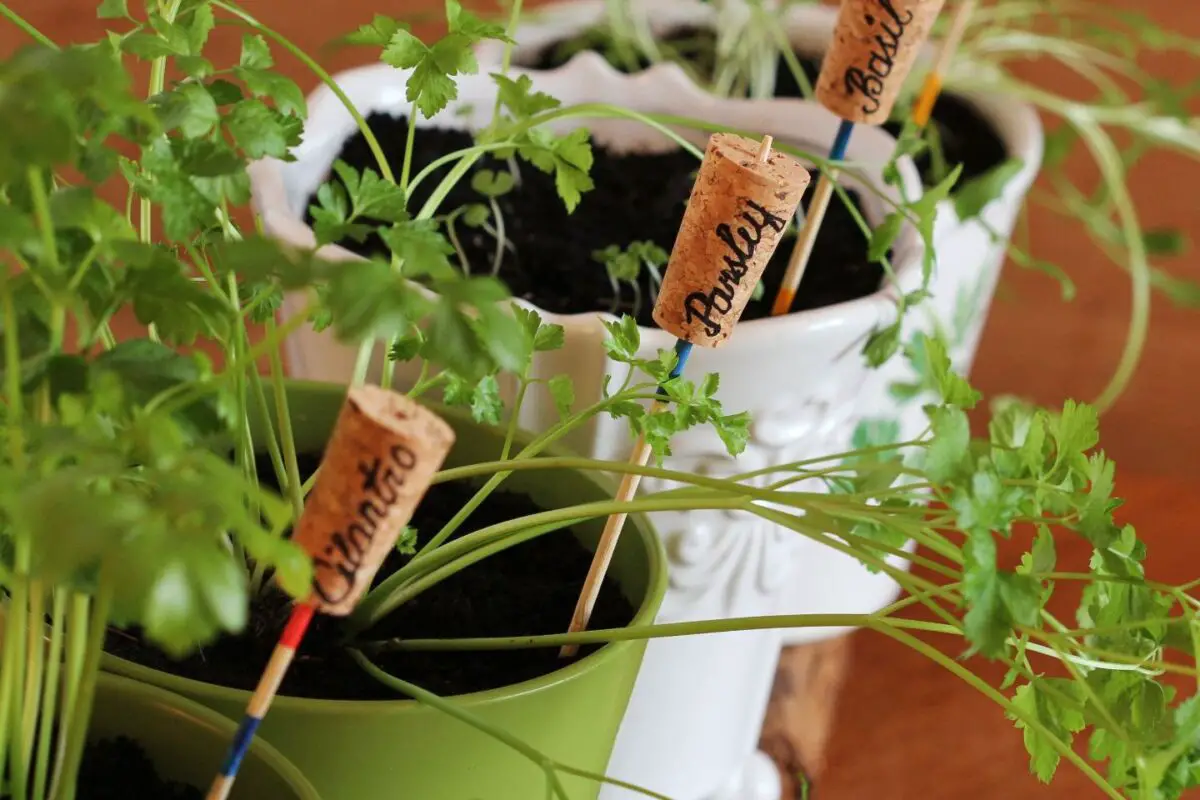Every major foodie will tell you that fresh-cut herbs can turn any regular meal into a spectacular one. Getting those fresh herbs at the grocery store can get pricey. That is why so many gourmet fans are huge fans of growing herbs on their patios or balconies.
How do you grow herbs on your balcony? There are several common ways people get started working on a balcony herb garden, including the following:
- Getting windowsill flower baskets
- Having hanging gardens
- Starting with potted plants
You don’t need to have a lot of space to start having an herb garden, nor do you need to have a big budget. If you have been hoping to kick off your own herb garden, there has never been a better time than today. This guide will show you how to get started in ways that work with your apartment’s size.
How Do You Grow Herbs on Your Balcony?
The simplest answer to this is that you’re going to need to grow your herbs in a planter, windowsill pot, or in a hanging basket. Since balconies are small, your primary goal is to make sure that you use your balcony’s extra space as well as possible.
Starting out means that you are going to need to do a little planning. Thankfully, figuring out your garden is going to be a breeze once you get your goals aligned.
Before You Begin: Understanding Your Herb Options
Before you can even start buying up planters, it’s essential to look at the size of your balcony, the structure of the balcony, and the direction your balcony faces. Here’s what you need to take into account while you plan your garden:
- Balcony Size. If you are capable of walking around and have extra space, keeping potted plants on your floor or stacked on shelves is a good option. Otherwise, hanging baskets and windowsill planters are going to have to suffice.
- Sunlight Levels. Balconies that face the sun are going to be great for full sun plants. Shady balconies may need a special grow light or may work best with shade plants.
- Electrical Outlets. Electrical outlets make it possible to get grow lights and add other accents to your balcony garden.
- Hanging Hooks/Balcony Bars. These make it a lot easier to get hanging pots secured. Using windowsill planters is a better option if you have a balcony made of solid brick or a concrete wall.
- Temperature. Not all plants will be able to fare well with the temperatures around your area. It is a good idea to get a solid idea of what plants will tolerate your area’s temperature range.
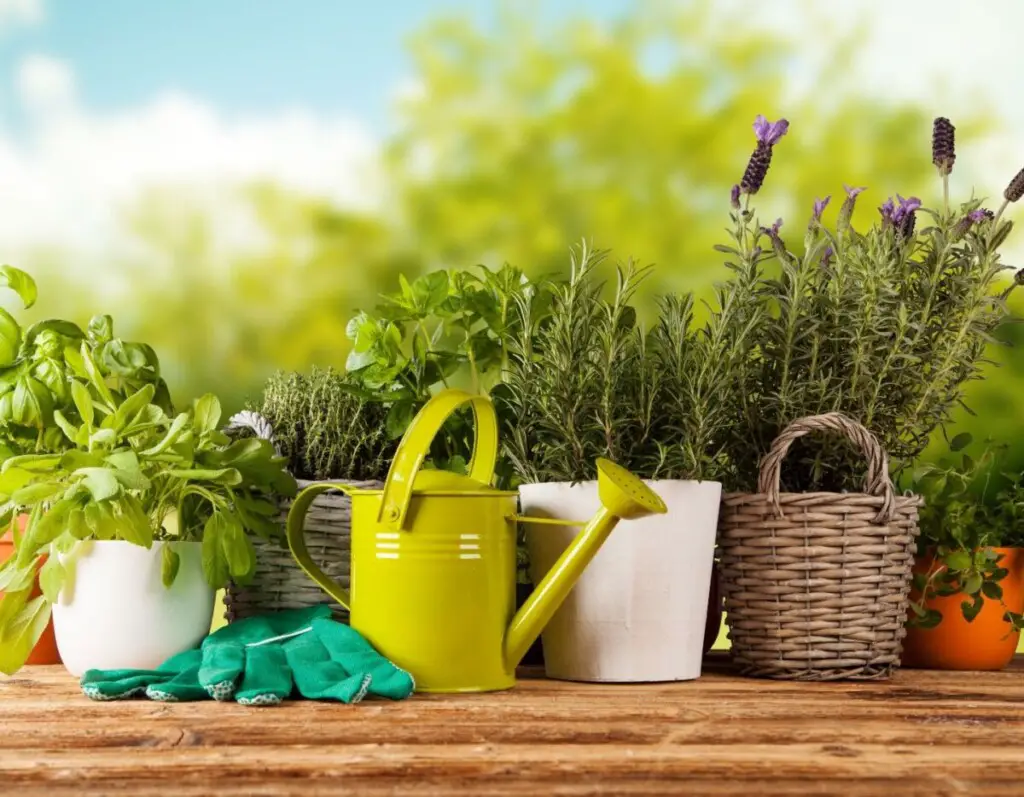
What Will You Need in Order to Get Started?
Getting started with your own balcony garden requires little to begin with. When you are first starting out, we suggest getting the following from a local flower shop or gardening center:
- Plant Containers. We are going to detail these below, but it’s safe to say that you are going to need at least one.
- Potting Soil. While you can work with standard potting soil for most herbs, it’s often better to splurge on high-quality, aerated potting soil with perlite added into the mix. The soil you use can make a big difference in the flavor of your herbs.
- Herbs. You can find a nice array of herbs and compost in ready-to-care-for planters in local gardening stores, grocery stores, and specialty stores.
- Water. Water from the tap is fine.
- Fertilizer and Plant Food. Most herbs will need some form of nourishment to make the most of their lives. Standard fertilizer options and a little Miracle-Gro is more than enough in most cases. If you aren’t sure if you need specialty mixes, ask a plant care specialist.
How Much Maintenance Do Balcony Gardens Need?
It all depends on the plants you choose as well as the setup of your garden. The chances are that you won’t need to do much. Watering your plants once to twice per week and fertilizing them once a month is the norm for most beginner plants.
The best way to determine how much maintenance your garden needs is to look at the growing instructions that come with your plants. Remember to check for pests that might find your herbs as tasty as you do, along with regular watering and feeding sessions.
Understanding Your Gardening Options
Each balcony garden option has its own perks and pitfalls, but they all are doable for newbies. To help you understand what you will need in each gardening setup, we decided to give you a guide from the most involved setup options to the least complicated.
Growing with Windowsill Flower Baskets
Most people have seen people grow flowers with window box planters, and if you are working with a balcony, it is a viable option. Window box planters can be hung off the side of balcony rails as well as concrete walls.
Box planters are great for gardeners who want to grow multiple herbs of the same type, or if you want to add a splash of color and decoration to the front of your home. These planters are a very traditional way to get your gardening on, and there are tons of different styles to choose from, too.
The hardest thing with gardening using window planters is installation, and even that’s a cinch. Here is what you should be prepped to do:
- Buy a windowsill planter you like and get some planter brackets. We suggest going for a sturdy box, like this concrete-look planter. You will also need planter brackets to install them on your balcony. We suggest using these adjustable clamp brackets.
- Place the clamp brackets on your balcony. Secure them on per the instructions included with them. If you installed them correctly, you should be able to push down on them without heavy movement from them.
- Gently place the planter box on top and secure it in place. Some planters will stay put as-is. Others will need to be bolted in place. You will need to refer to the planter and bracket instructions to figure out what’s going on.
- Add soil to the planter, then add the plants you chose. Once everything is secured, you can plant and transfer the herbs you chose.
If you have a balcony that has very thick walls rather than a metal railing or thin wall, you can just balance smaller planter boxes on your balcony’s ledge. Securing them with a deck rail bracket will keep them from falling.
Growing with Hanging Baskets
Hanging baskets are another old school method of creating a balcony garden, and they are excellent for apartments that lack much space. You may need to install hooks on your balcony’s walls to hang them, but if your balcony has a metal bar railing, it is not necessary.
There are several types of hanging baskets you can choose from:
- Traditional Hanging Baskets. These hanging baskets with little pots attached to a hook are what most people think of when people discuss hanging flower baskets. They are easy to install and have a lot of space for a single bunch of flowers.
- Over the Door Hanging Baskets. These baskets have multiple levels of shelving where gardeners can place potted plants. They usually must be drilled into a balcony wall or hung over the door to your balcony.
- Tiered Hanging Baskets. These are traditional hanging baskets that have multiple levels that hang down from the first baskets–a basket underneath a basket underneath a basket. These are generally large enough for numerous herbs to share a planter.
- Pots in Slings. Macramé slings that keep clay planters are a popular new trend among balcony gardeners. These can be tiered, or single. They are usually designed with smaller plants in mind.
If you choose to use hanging baskets as your plant-holder, keep the weight of your potted plants in mind. Heavy planters with bulky plants might be too much for most hanging baskets to bear.
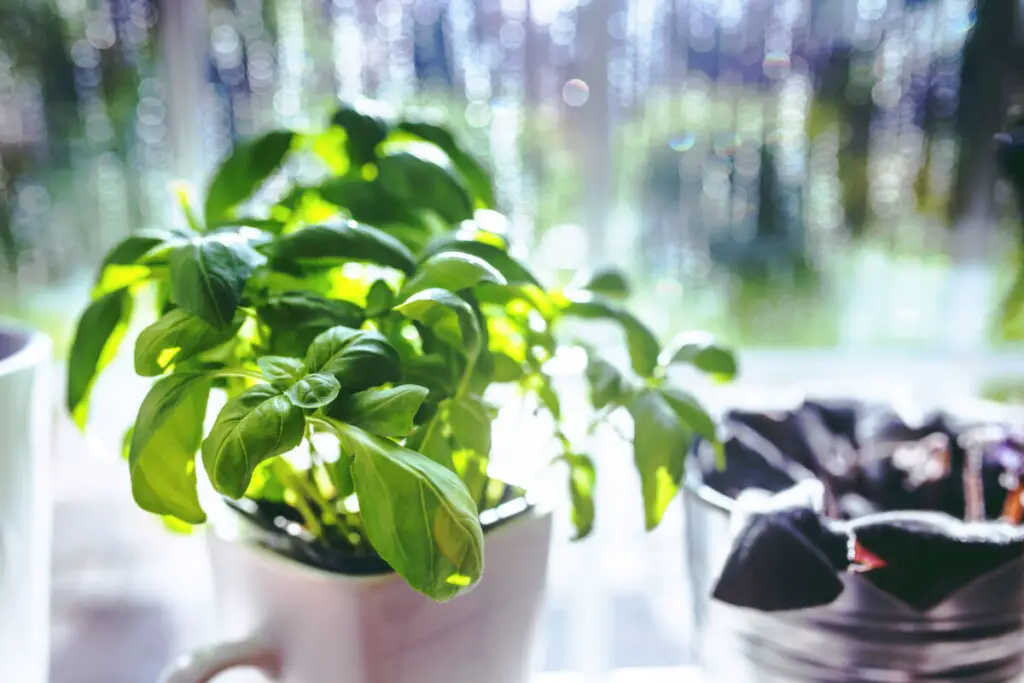
Growing with Potted Plants
If you are looking for a simple solution that is easy to work with, just placing potted plants on your floor or on shelving units in your balcony is going to be the easiest option. Potted plants have the added advantage of being sturdy and letting you use different potting soils—a must if you want to grow both tropical plants and cacti, for example.
Every herb that is known for invasive properties should be kept in its own separate planter. That is why potted plants placed in wall-hanging slings have become popular.
Choosing the Right Plants for Your Balcony
Once you have your setups chosen, you need to find the right herbs for your garden. When choosing herbs, make sure they are compatible with your local environment, as well as your taste palate. To help you put together a nice selection, we decided to look at some of the most balcony-friendly herbs you can buy…
Lavender
Lavender is not just one type of plant. Its genus includes French lavender, English lavender, as well as Ballerina lavender. These plants can range from as short as six inches to as large as 18 inches in height, depending on the cultivar.
This sun-loving perennial offers up a beautiful scent, can be used in mixed drinks, and is a main ingredient in the spice mix known as herbes de Provence. It is remarkably hardy and easy to grow, which is what makes it a favorite pick around the world.
If you are a fan of the scent of lavender, you can’t go wrong with growing this as an herb in your balcony’s garden. Nothing quite beats smelling this aroma wafting in from your window on a hot summer day.
Mint
Whether it’s spearmint, peppermint, or any other form doesn’t matter. The smell and taste of mint are some of the most recognizable things in the world. Mint is known for being extremely easy to grow, making it an ideal starter herb for a beginner gardener.
Like lavender, there are mint cultivars that range from the petite to the very large. What gardeners need to know is that mint requires its own pot. Trying to grow it in shared pots rarely ends well since mint tends to be invasive. Since mint is a perennial, keep a close eye to make sure it doesn’t take over.
Lavender and mint are often grown in separate pots next to each other. Why? Because their scents complement each other.
Basil
Basil is one of the most common types of herbs you will see being sold in planters at grocery stores. That is because it’s a shockingly easy herb to take care of and can be harvested immediately—right out of the planter!
Though it is easy to grow, basil is sensitive to cold weather. This annual plant does well in sunny areas, using well-drained, pH-balanced soil. Regular watering and a little plant food will go a long way. Your pizza and pasta sauces will thank you for raising this petite herb in your home.
Basil is not your best bet for a long-term plant. You can only harvest the leaves until the plant grows woody.
Coriander
If you used to have a regular garden where you’d plant seeds and watch them grow, coriander might be a good option. Coriander, also known as cilantro, has a wide range of different cultivars, but all do best when seeds are sown and gently nourished. It can take three to four weeks for germination to occur.
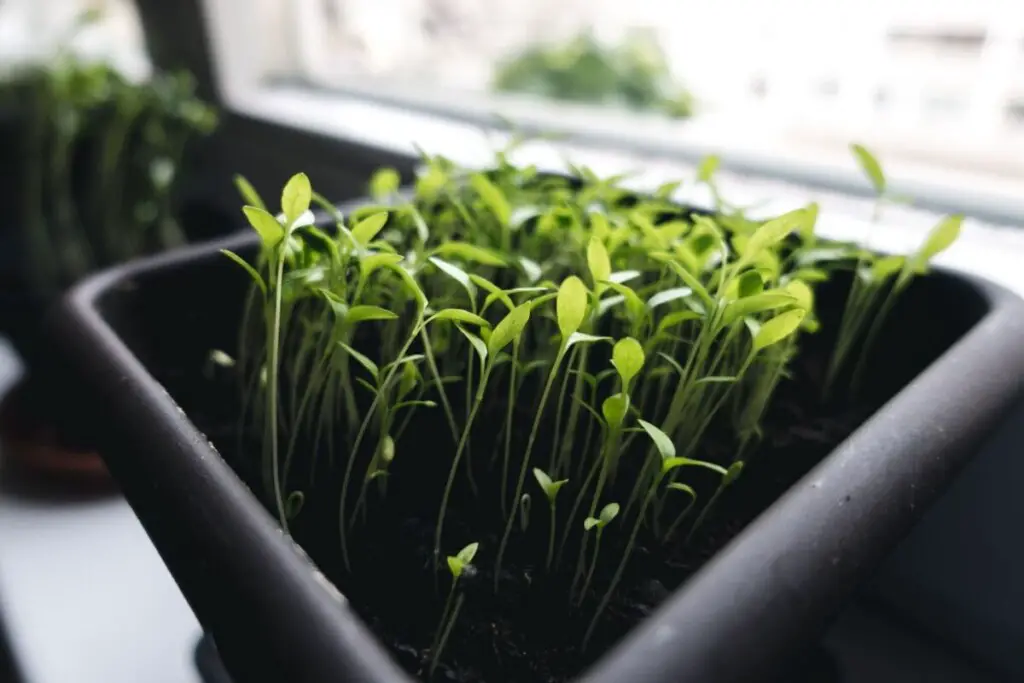
Careful watering of your coriander is a must, which is why well-draining soil works best. Once they have sprouted, you will need to wait a while before you can snag some cilantro for your tacos. It must be robust enough to handle a clipping!
You might want to know that coriander’s leaves are known as cilantro—and it can be somewhat tricky to get them to grow. Coriander’s growth cycles can go into a panic mode known as “bolting,” which will cause the plant to grow flowers where its leaves should be. It is an annual that self-seeds frequently.
Parsley
You can select several different cultivars from the parsley family, and all of them are amazing. This small, planter-friendly herb is excellent when it comes to sharing space with other herbs. It’s also low maintenance compared to most other herbs on the market.
Parsley, unlike most other plants, is excellent in shade to partial shade. It is a biennial that grows leaves in year one and seeds itself in the next year. Most gardeners prefer to plant it every year because it keeps your influx of herbal goodness fresh.
The one issue people tend to have with parsley is that it is a slow-growing plant. If you are okay with that, this is a good beginner’s option to consider.
Greek Oregano
Do you have a super-sunny apartment balcony in your possession? While many flowers might get harmed by the excessive light and heat, Greek oregano is a little different. Oregano cultivars, in general, require anywhere from six to eight hours of direct sunlight per day. Some of these perennials even require more!
Oregano is known for being somewhat hard to grow, but Greek oregano is not as difficult as some other oreganos. If you have fledgling skills in the gardening world and some dedication, you should be able to enjoy growing this herb with relative ease.
Thyme
Thyme is another plant that drinks up sunlight like most people enjoy lemonade on a hot day, but unlike coriander or oregano, it is a reasonably hardy plant. As long as it gets a bare minimum of six to eight hours of light a day, thyme is good to go. Thyme is also semi-evergreen, so you do not have to worry about cold weather killing it off.
This perennial has a wide range of different cultivars, including lemon thyme—a cultivar known for imparting a lemon flavor into recipes. Lemon thyme is a good option if you are looking for an easier herb to grow, and yes, it can be potted in the same planter as other herb species, too.
Sage
You might have heard of the spiritual practice of burning sage as a way of cleansing the air. What many people now forget is that this perennial herb also does a remarkable job in bringing out the flavor of poultry, vegetables, and wild game. It’s an all-around good plant to have on your property.
In terms of gardening and maintenance, you can’t get hardier than this perennial. It lasts through winter, requires minimal watering, does not need much fertilizer, and grows like wildfire. Sage is a fantastic starter plant. Like mint, sage absolutely needs to be planted in its own container.
Chives
Chives are cute, spiky little plants that have purple “feathery” puff flowers. Their green shoots are known for adding an oniony flavor to dishes and sauces, not to mention an elegant appearance to dishes as a garnish.
If you are looking for a low-maintenance plant, getting chives when they have already sprouted is a great choice. These petite perennials love the sun, which means that you should try to place them on a South-facing balcony if possible.
Lovage
Want to give a European favorite a try? If you can find lovage near you, buy it for your balcony herb garden. This tall herb tastes like a mix between celery and anise and has been used for centuries as a skin softener in bathwater.
A perennial that has been known for being able to tolerate full sun to partial shade, lovage is often way too tall to handle a typical hanging basket. Since it can grow up to six feet tall, these are best placed in large pots on the floor of your balcony.
Rosemary
Perhaps one of the best herbs for people who love a punch of flavor is rosemary. This evergreen herb is one of the most popular to pair in stews featuring chicken, beef, fish, as well as traditional roasted vegetables.
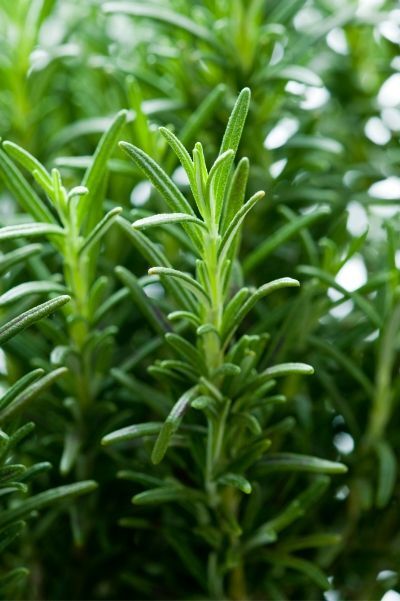
Much like lovage, this is a sun-loving herb that will grow tall if you leave it to its own devices. Some types can grow as high as four feet in height! Placing them on a floor-based planter filled with slightly sandy soil is the way to make them thrive.
Having rosemary can be a good option to consider if you live in a cold area or don’t have much time to water your plants. They also are known for their excellent ability to share planters filled with sage.
Planning Out Your Balcony Garden
While it’s nice to think that all plants will “get along” and share space, the truth is not always so easy. Some plants are known for being more invasive than others. Other plants may need to be placed strategically to get as much sun as possible, while others may need to be hidden away to ensure they do not get burned.
A little planning can go far when you are trying to get a mixed-species herb garden going on your balcony. These tips below can help immensely:
- Plan to bring all perennials indoors. If you want your perennial plants to survive year after year, you will most likely have to move them indoors during colder months. On the other hand, annuals will not need to be brought indoors since their entire life cycle is one year long.
- Know the difference between annuals and perennials, then plan accordingly. Are you looking for a year-round garden that you might need to house indoors during the winter? Or, are you looking for a summertime-only garden? Annuals only bloom once and stay alive for one year. Perennials will come back year after year. This makes a difference in how your garden’s outcome will look like.
- Figure out whether you are willing to move your plants indoors or pick their seeds. Choosing perennials means that you will likely have to house them in the winter to save them. With annuals, you will have to continue to repurchase them or replant their seeds to enjoy the fruits (erm, herbs) of your labor.
- When in doubt, give each plant its own individual container. A lot of herbs, including mint and sage, tend to grow in a fast, invasive manner compared to most other plants. When they share planters, these herbs can act as competition for their fellow plants and go so far as to drain them of resources.
- South-facing balconies offer the most light. Knowing this can be a huge help in figuring out your lighting placement. If you need more light for your plants, having a grow light on your balcony can work—if you have an electrical outlet.
Tips for Keeping Your Plants Alive
Once you have planned out which herbs you are going to get, how you will be working to care for them, and where they are going to go, it is gardening time. For the most part, following instructions you get with the plants will be enough to keep them happy.
However, there’s still a couple of pointers you should know before you are fully set in your growing schedule. Here are the biggest tips you should be aware of:
- Try to splurge for good potting soil if possible. Regular potting soil will suffice with hardy plants like sage, but fussy plants like basil might require perlite-laden soil instead.
- If your balcony is “indoors,” it’s best to buy plants that have not actually been entirely outdoors. Plants that were thriving outside might have a harder time adjusting to the indoor lighting and temperature stability. On the other hand, if those plants always lived indoors, moving them outdoors will usually only benefit them.
- Learn the proper way to water your plants. Most herbs work best when watered from the bottom up, rather than the top down. Though sticking to a watering schedule can work, the best indicator of your watering needs is the soil dampness. Most herbs do well in moist (but not soaked) soil.
- Keep an eye out for pests. Just like any other garden, pests and blights can cause your herbs to get sick. If you notice your plants wilting at an alarming rate, getting holes in its leaves, or dealing with white fuzz or webbing, you might have to get some herbicide.
Conclusion
If you want to grow your own herbs, there is some good news and some bad news that await. The bad news is that you will need to plan out your herb garden and figure out how to arrange your plants to give them the best chances possible. That will take time, but it’s always worth it.
The good news is that growing your herbs is fun to do, and planning things out is part of the fun. Once you set up your own balcony garden, you can expect to enjoy fresher herbs and a new connection with nature sooner than you think.

